A beautiful native fruit shrub perfect for yards, gardens and landscaping with a reputation as a nutritional powerhouse. Black chokeberries (Aronia melanocarpa) are an under-used fruit every gardener and forager should know about. Read on and I'll explain what they are and how you can use this fascinating, nutritious fruit.
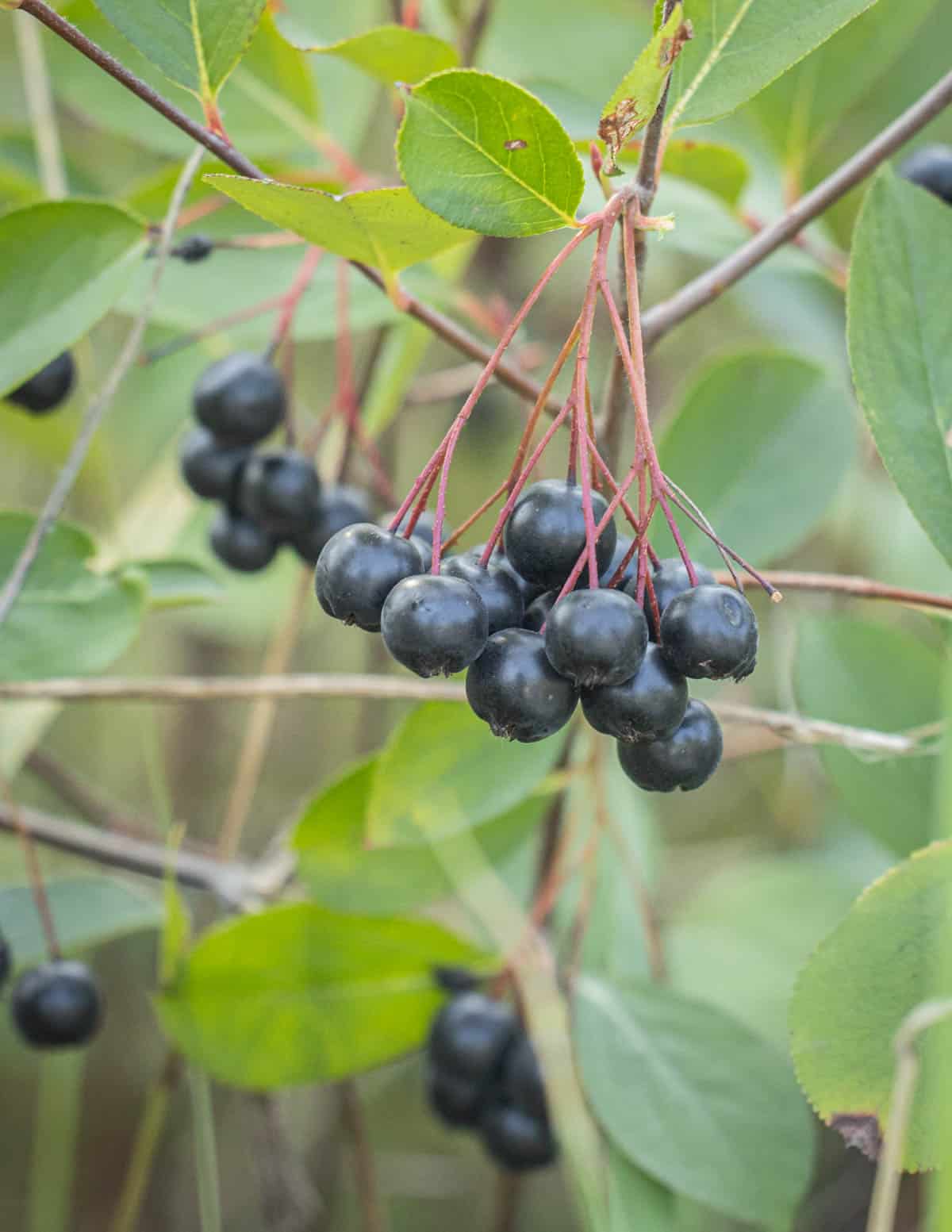
What are Aronia Berries?
Aronia berries (Aronia spp) are the fruit of a small to medium-sized shrub native to Eastern North America. In the wild aronia plants grow near swampy and wet soils, and occasionally dry places. They tend to prefer sandy soil and can tolerate partial shade but do best in full sun.
The fruit of the plant is edible and enjoyed by wildlife, but it has an off-putting, granular texture and a strong, astringent taste. Besides food, the rich color of the berries has been used as a natural dye by Native Americans.
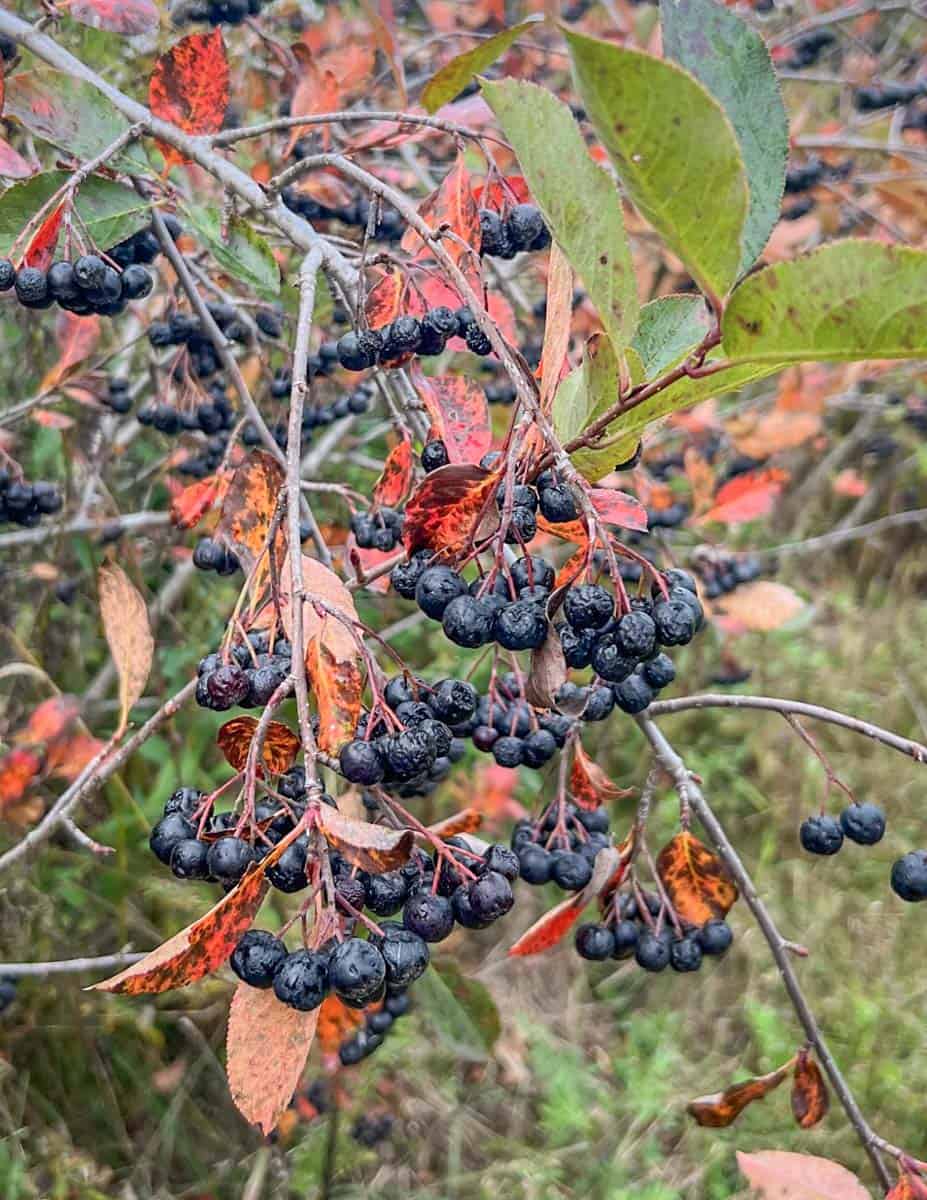
Aronia plants are easy to care for and produce a prolific amount of fruit relative to their size. Unlike other foraged fruit like wild blueberries you can harvest in the wild, the easiest place to find chokeberries is probably in landscaping or a friend's yard.
There's a number of different aronia cultivars available to grow. A few years ago I learned from Sam Thayer that unlike truly wild varieties, cultivars have been blended with mountain ash / rowanberry genetics (Sorbus spp) to increase the size of the fruit. The most common cultivar I see planted in landscaping is Viking, but Iroquois Beauty and Autumn Magic are two others you might come across.
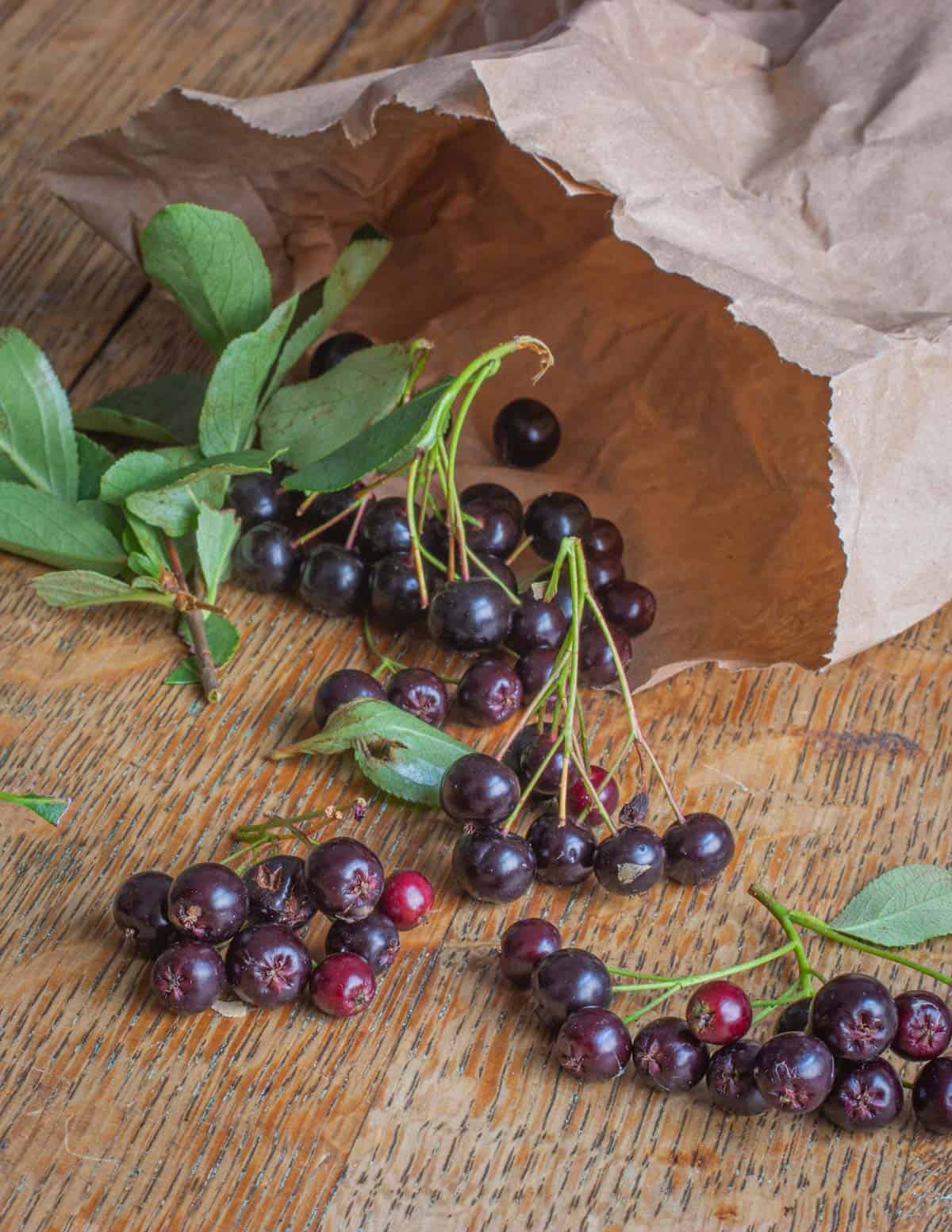
The bountiful clusters of dark, black fruit produced by the plant are edible and enjoyed by wildlife and humans. But there's a catch: the fruit has an astringent flavor and an off-putting, granular texture. Luckily there's ways to get around it in the kitchen which we'll get into further on.
(Potential) Chokeberry Benefits
I'm not a doctor or a nutritionist, but the health benefits of chokeberries are one of the attributes the plant is most prized for. Many people consider the fruit a healthy "super food" due to it's high concentration of anthocyanins and antioxidants.
Anthocyanins are compounds that provide the dark pigmentation of fruits like blueberries. Aronia berries are also rich in antioxidants, containing even more than blueberries.
From the National Institute of Health:
Aronia berries are rich in antioxidant phenolic compounds that show anti-inflammatory activity, which may be translated into potential preventive and therapeutic effects for metabolic disorder, as well as for cancer, diabetes, and cardiovascular, kidney, and liver diseases.
Chokeberry Identification
If you've heard of chokeberry trees it's a misnomer-the plant is a small shrub, often knee to waist-high when seen in landscaping, but they can grow taller. In the wild the plant can grow to be 3-8 feet tall. In the spring white flowers appear. Like other fruits, noticing the flowers in the spring is a good way to plan future harvests.
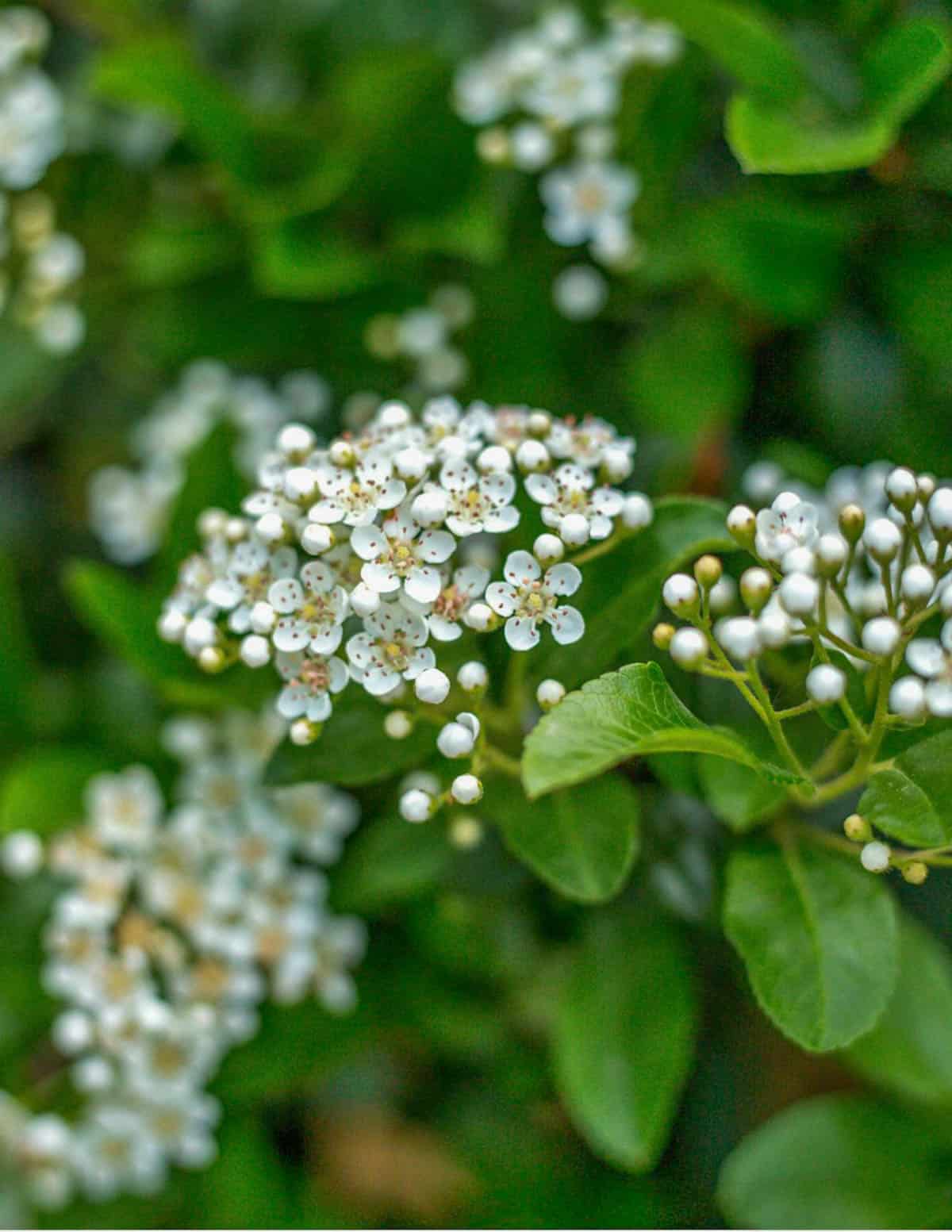
Leaves
The leaves of the plant resemble other fruit shrubs which can make them a little tricky to pick out if the flowers or fruit aren't showing. They're arranged alternately on the branch, have serrated edges and a gentle fold along the midvein.
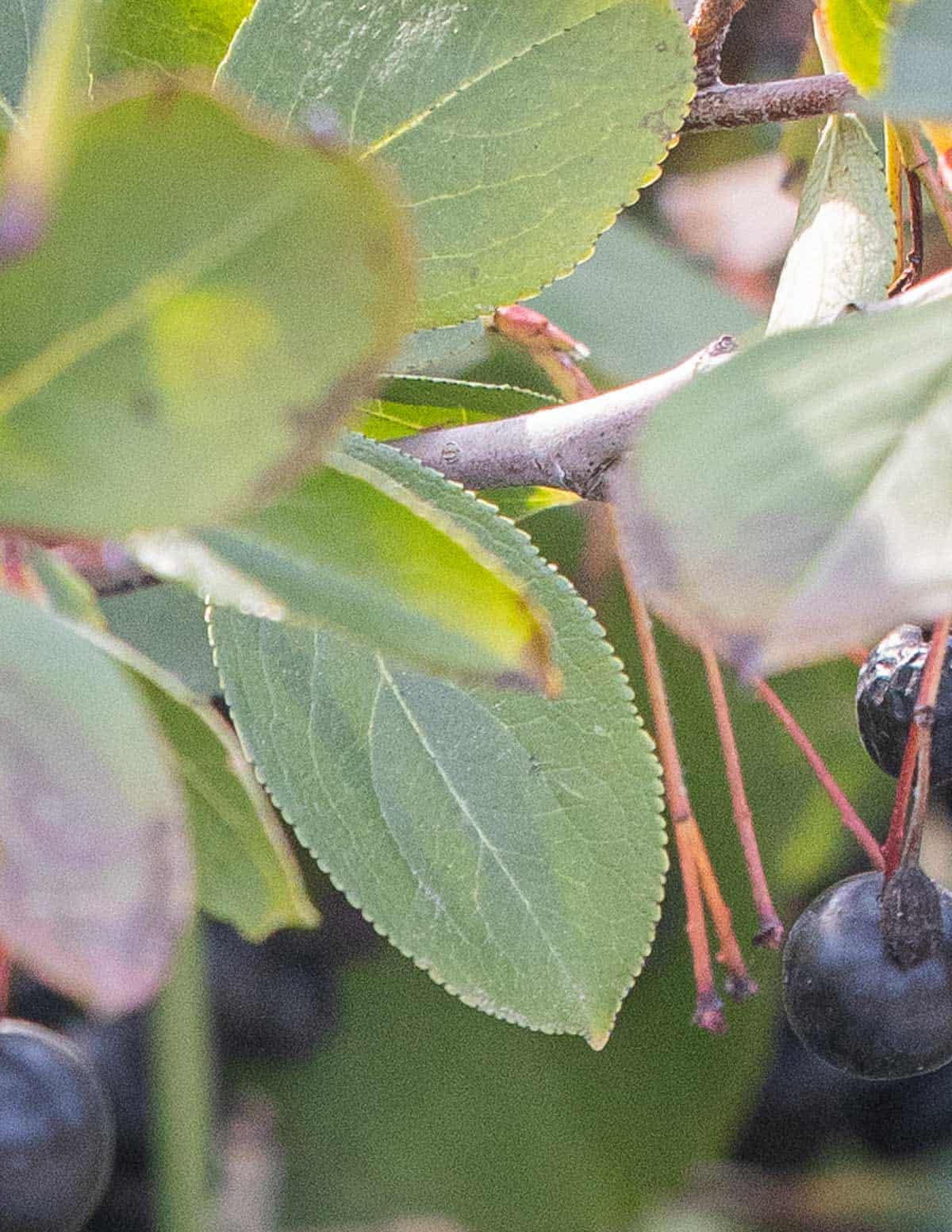
Fruit
Clusters of juicy, blue-black fruit are borne on clusters hanging from reddish stems (racemes). One of the most notable characteristics is the distinctive 5-pointed fold or crimp on the end.

The seeds are perfectly round, fleshy, and filled with many soft seeds that are barely noticeable when eating.
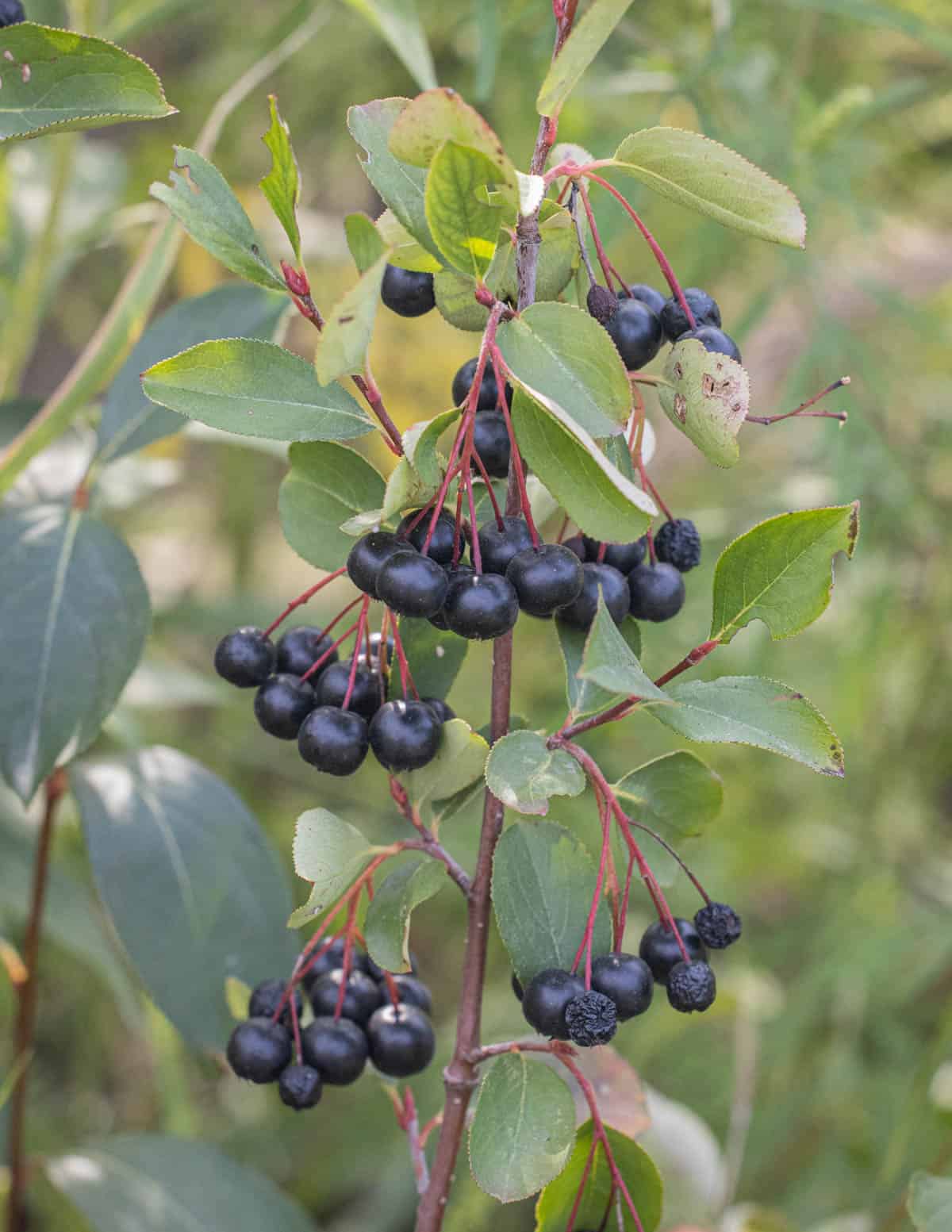
The fruits bares a resemblance mountain ash berries, which could be confused with red aronia berries (Aronia arbutifolia), if they grew from a tree instead of a shrub.
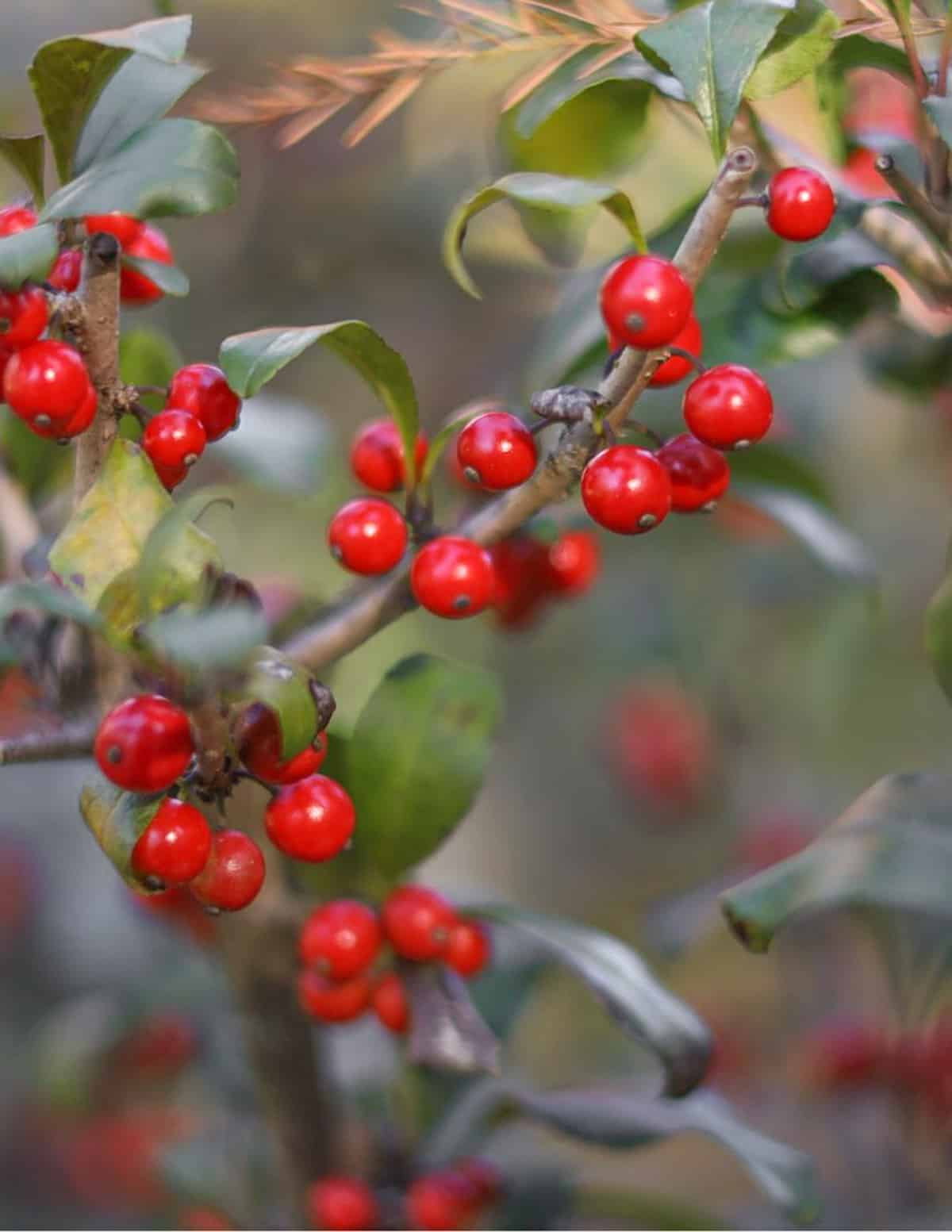
Chokeberries are often planted in landscaping making them perfect for urban foraging. Keep your eyes peeled for small shrubs with black berries and you can easily harvest aronia seeds to grow your own or cook with.
Look A Likes
Aronia plants are easy to identify, but there are two specific look a likes they're often confused with.
Chokecherry vs Chokeberry
Likely the plant most commonly confused with chokeberries are chokecherries. The names are similar and both are a dark black when perfectly ripe. But if you look closely the plants are very different.
First and foremost, cherries are stone fruits and have a pit where aronia do not. Secondly, aronia grow in clusters of drooping fruit while chokecherries are arranged alternately on the racemes.
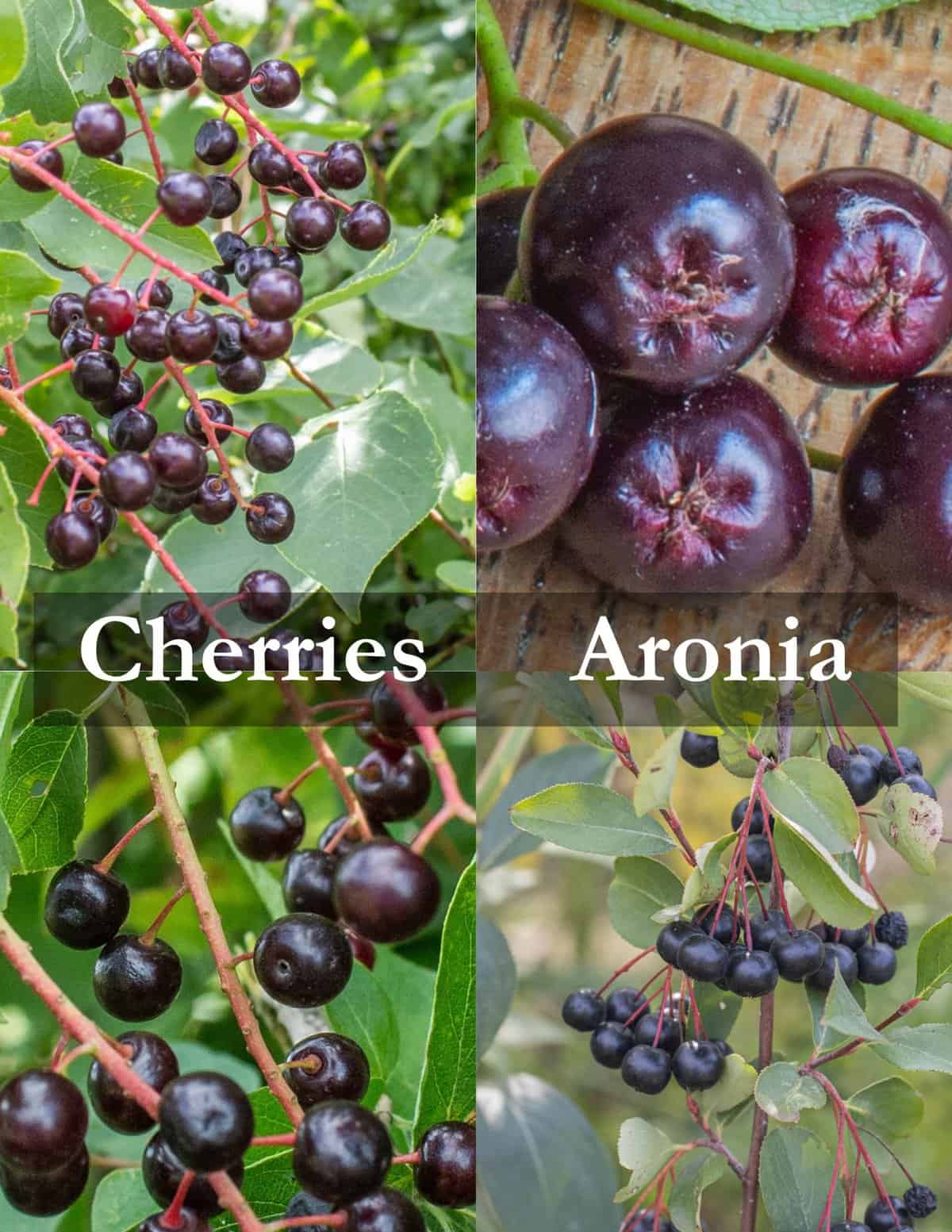
Chokeberry vs Buckthorn
I'll share an embarrassing secret with you. Many years ago now I went to my favorite disc golf park and picked a bunch of aronia berries. Unfortunately I'd harvested buckthorn, and proceeded to make a foul tasting jelly.
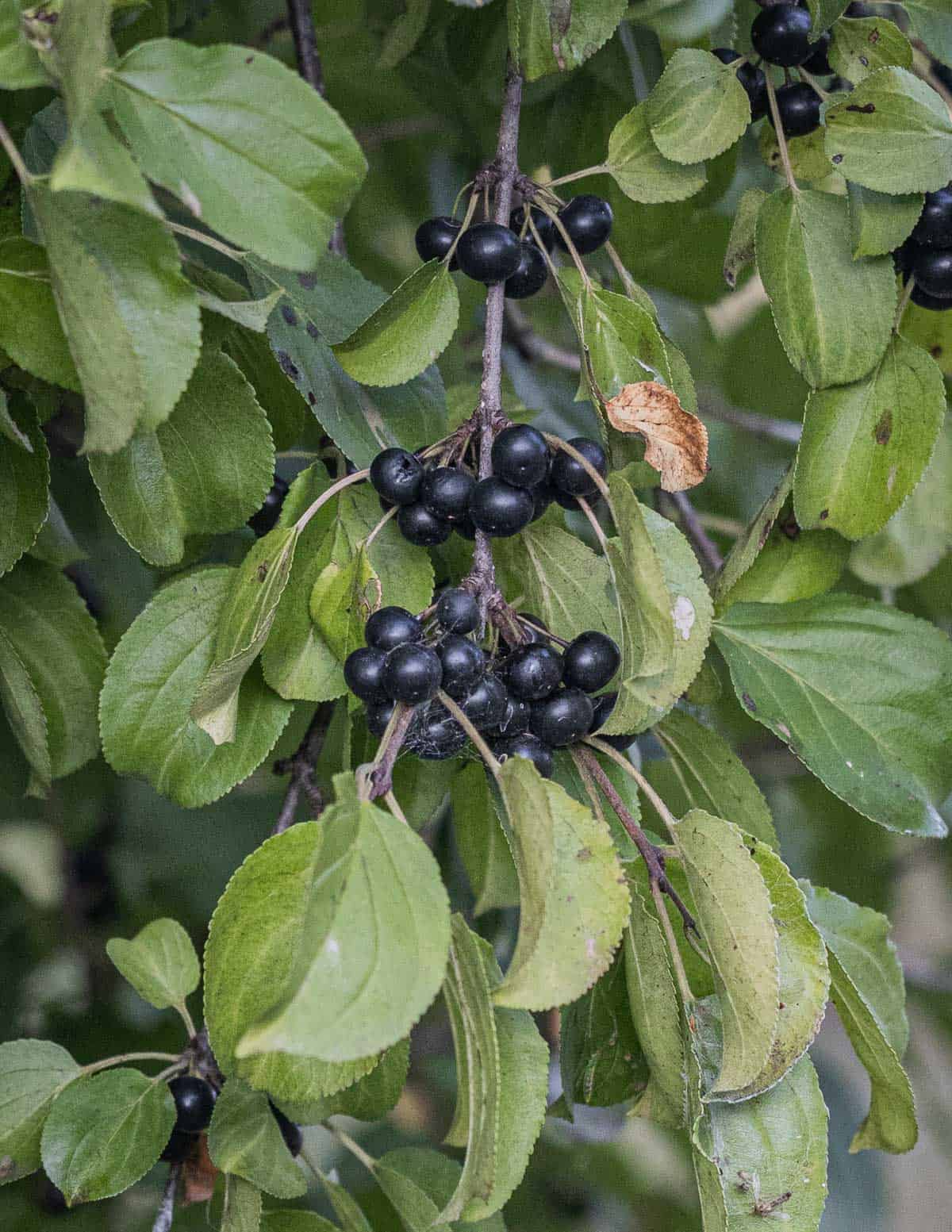
In hindsight my error is easy to see. Buckthorn is very different from aronia, but both plants are small shrubs that produce black fruit. But, buckthorn berries do not have the red stems like aronia, and the taste is foul and bitter. The clusters of fruit also appear to hug the branches.
When To Harvest Aronia Berries
Typically the berries are harvested in the fall. They're ripe when they're completely black. As the season progresses the fruit can start to develop wrinkles and lose juice but it doesn't affect the quality of the fruit.
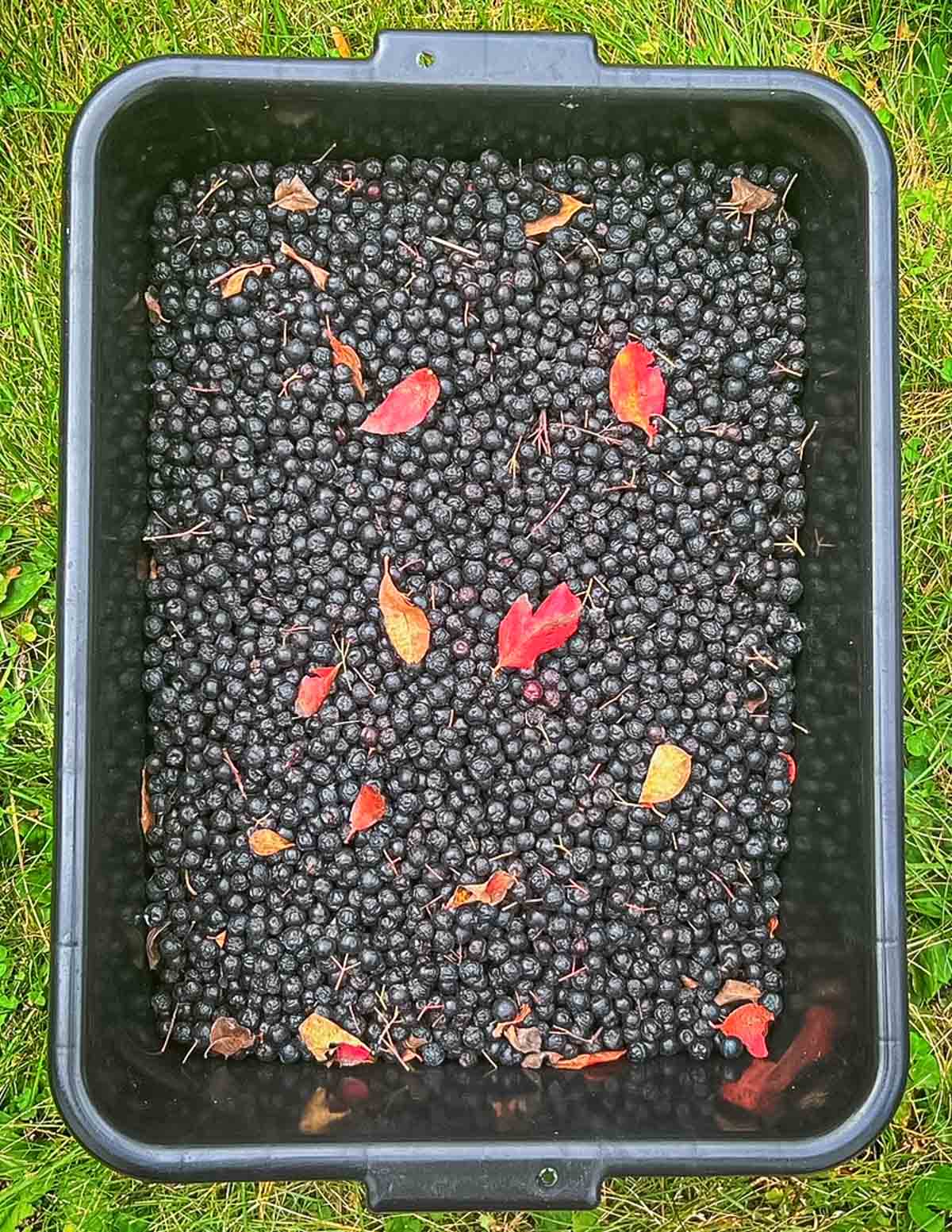
One of the benefits of chokeberries is that they can be harvested nearly all year long. The fruit will stay on the plant through the winter and birds often only eat it when there's nothing else left in my experience. As the fruit isn't generally consumed but instead made into juice they're perfect berries to forage in the winter.
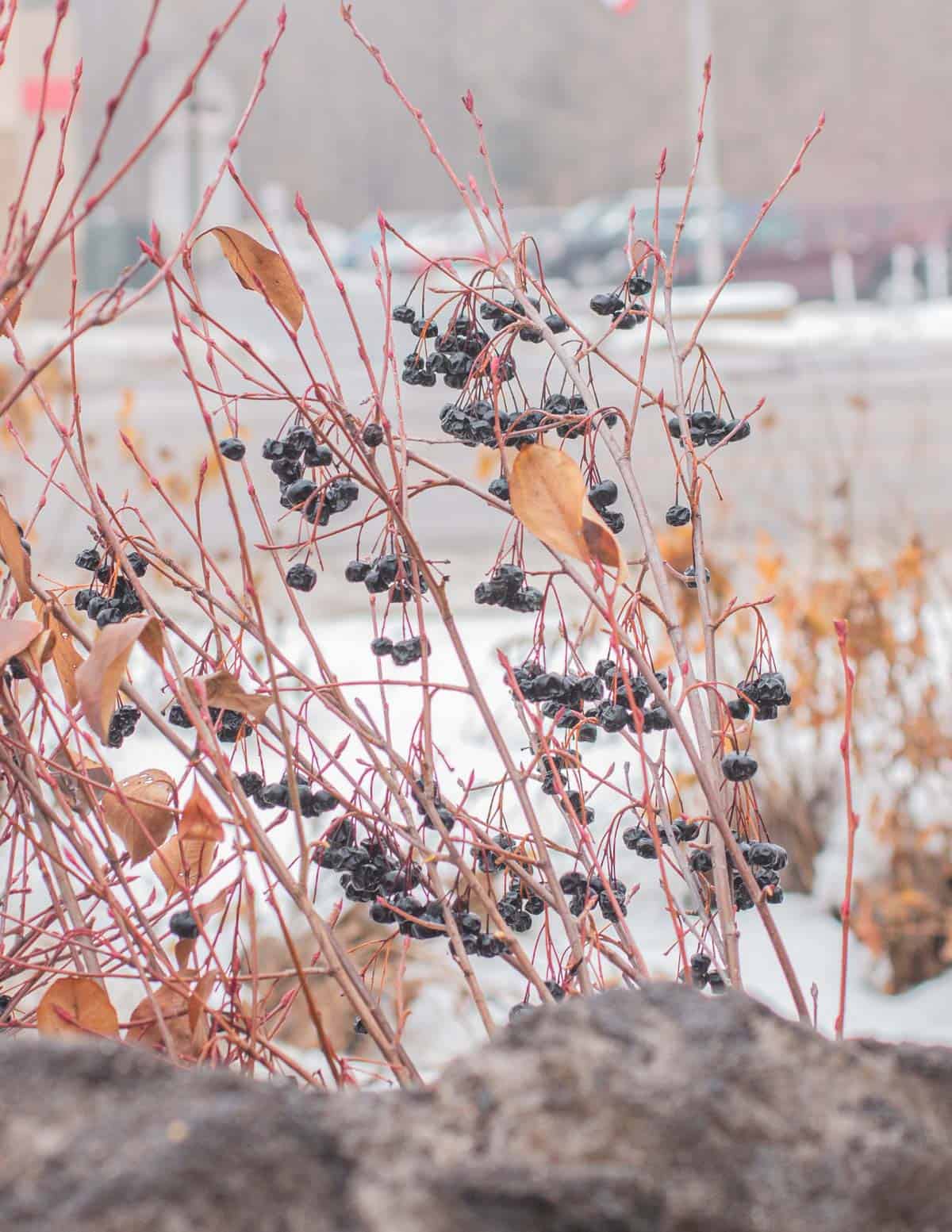
Harvesting the fruit is easy. You can strip the whole fruit from the plant or remove the berries while still attached to the racemes. I prefer to remove the berries individually to save time processing them afterward. Depending on where you harvest they can be very clean and may not need to be washed.
How to Cook Aronia Berries
Cooking chokeberries is a bit of a misnomer. People will say they can be used for smoothies, syrup, pies, juice, muffins. This is technically true, but you won't be adding them to salads or yogurt like you would a handful of blueberries.
The astringent taste and unpleasant, tough, granular texture is off-putting to most. This is why aronia berries aren't generally cooked like you would other fruits.

Chokeberry Juice
Where most fruit are used to make jams, jellies and preserves, juice is the main product derived from the fruit. Aronia juice is a very popular product in Eastern Europe where the majority of it is sold but it hasn't become mainstream in the United States, yet.
One very important thing to know is that aronia juice can be a strong laxative for some people. I've never had a problem with it personally, but I almost always mix it with other things as opposed to drinking it straight.
There's essentially two different ways to make the juice. Pureeing the fruit cold in water will bypass the astringency but won't give as rich of a color as if the berries are heated in liquid. The only catch is that cooking the fruit releases tannins, making it more difficult to drink on its own.
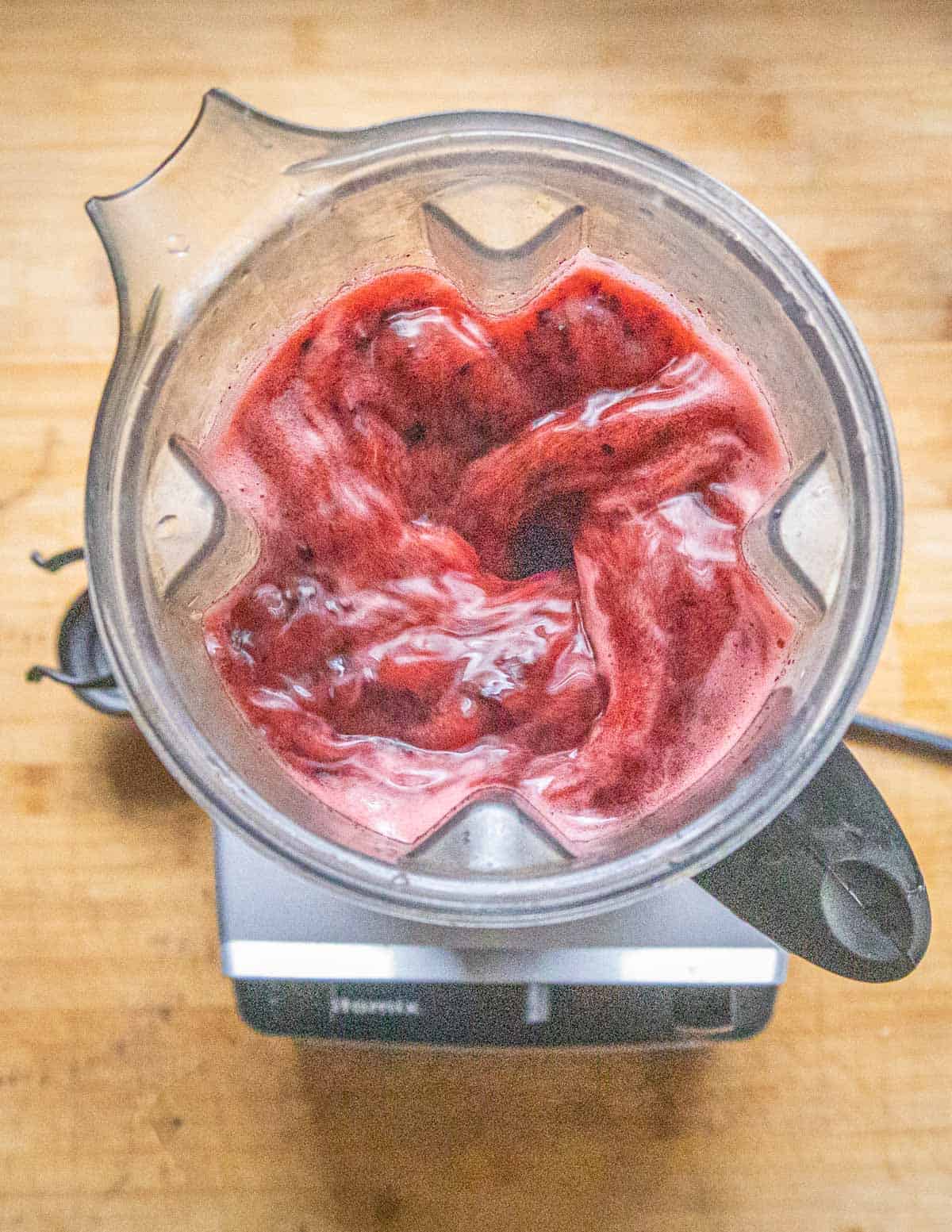
Besides juice, a blender is a useful tool for cooking with aronia berries if you want to eat the fruit. Pureeing the fruit bypasses the rough texture and lends a rich purple color to anything the fruit is used in. You can use the leftover pulp to make purple fruit scrap vinegar.
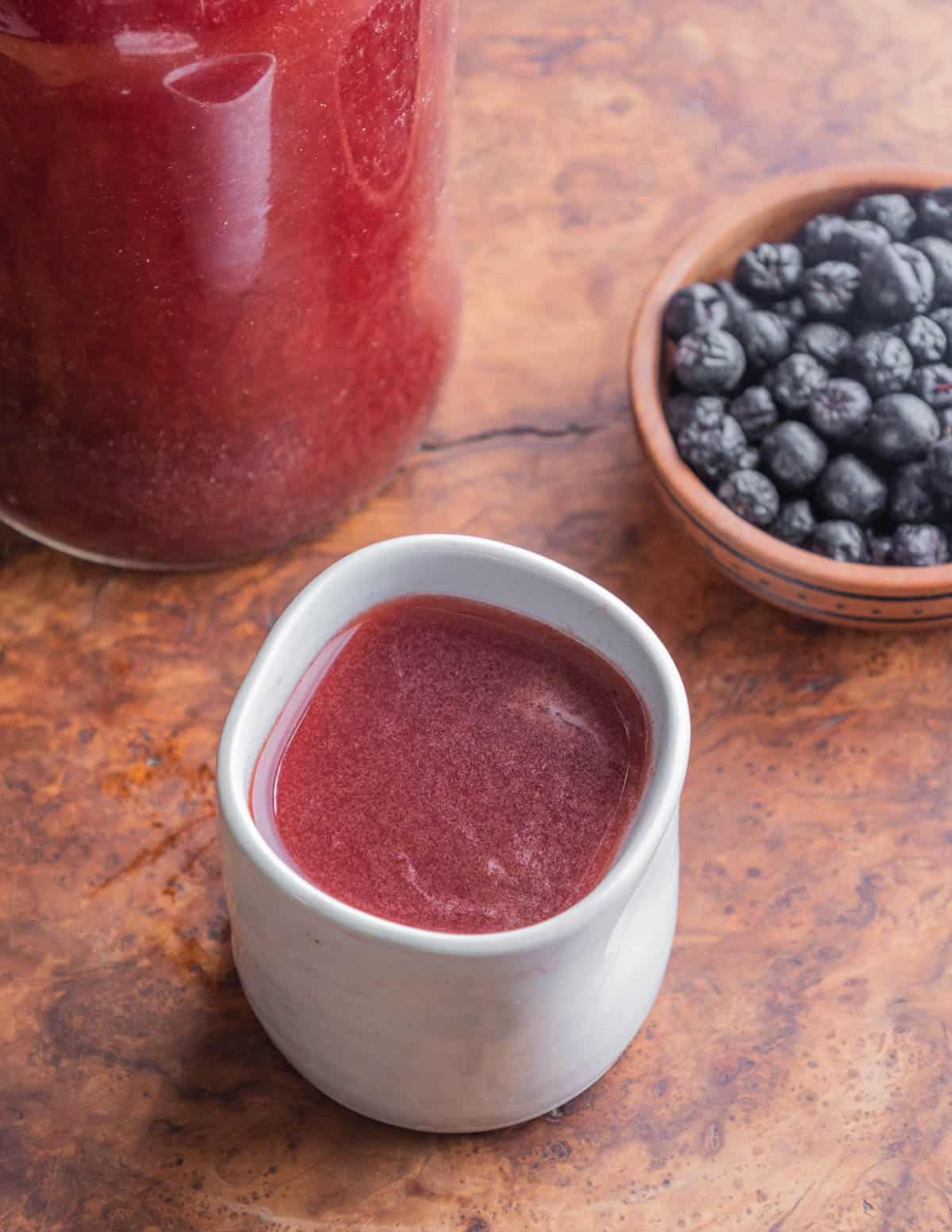
My chokeberry vinaigrette is a great example, and aronia smoothies are also popular way to enjoy the fruit.
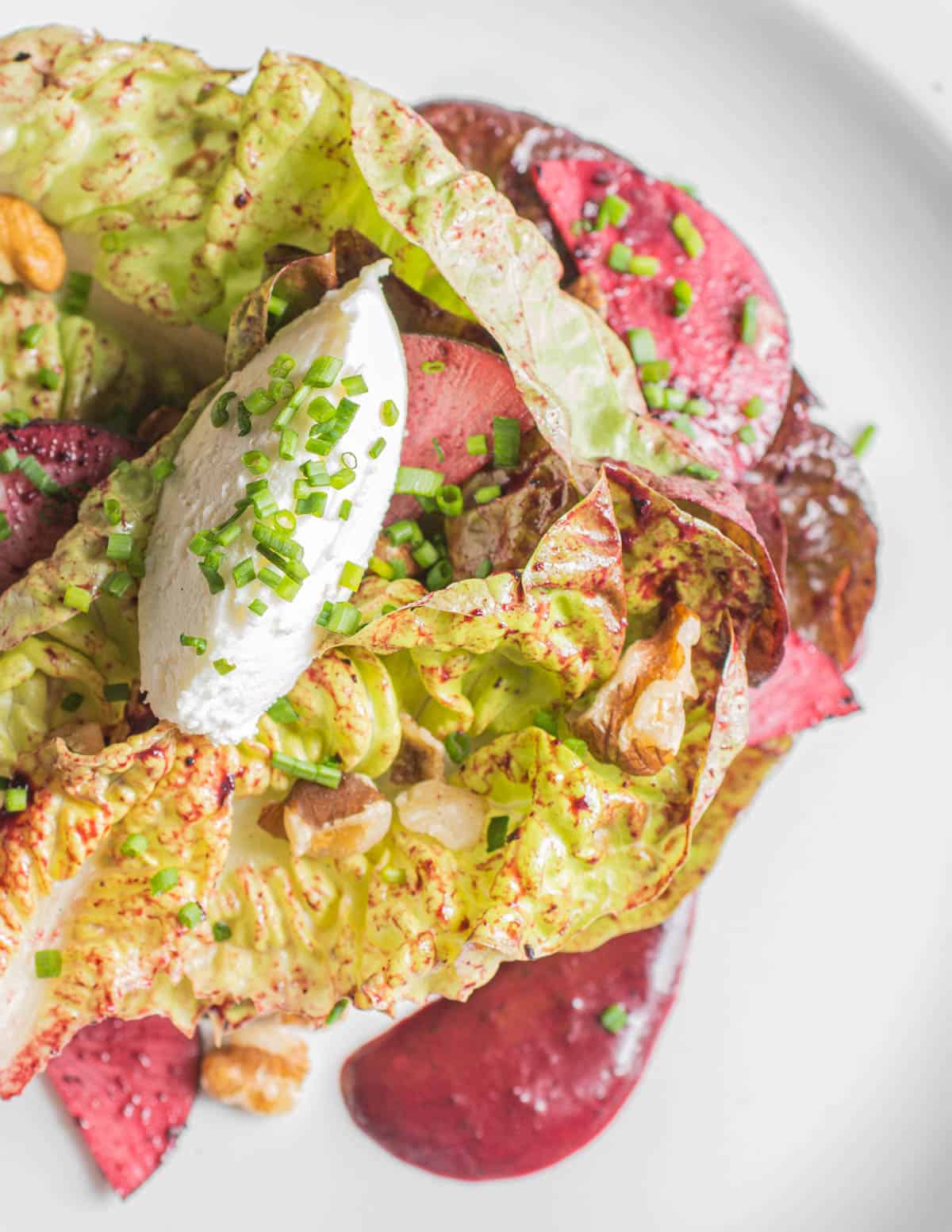
How to Preserve Chokeberries
The fall is a busy season for foragers. One of the best attributes of many wild fruits is that they can be put in the freezer to save time, and chokeberries are no different. If you want to buy chokeberries out of season most of the time they'll be frozen.
Frozen Aronia Berries
To freeze chokeberries I use the "IQF" (individually quick frozen) technique. Put the berries on a baking sheet lined with parchment and freeze them.
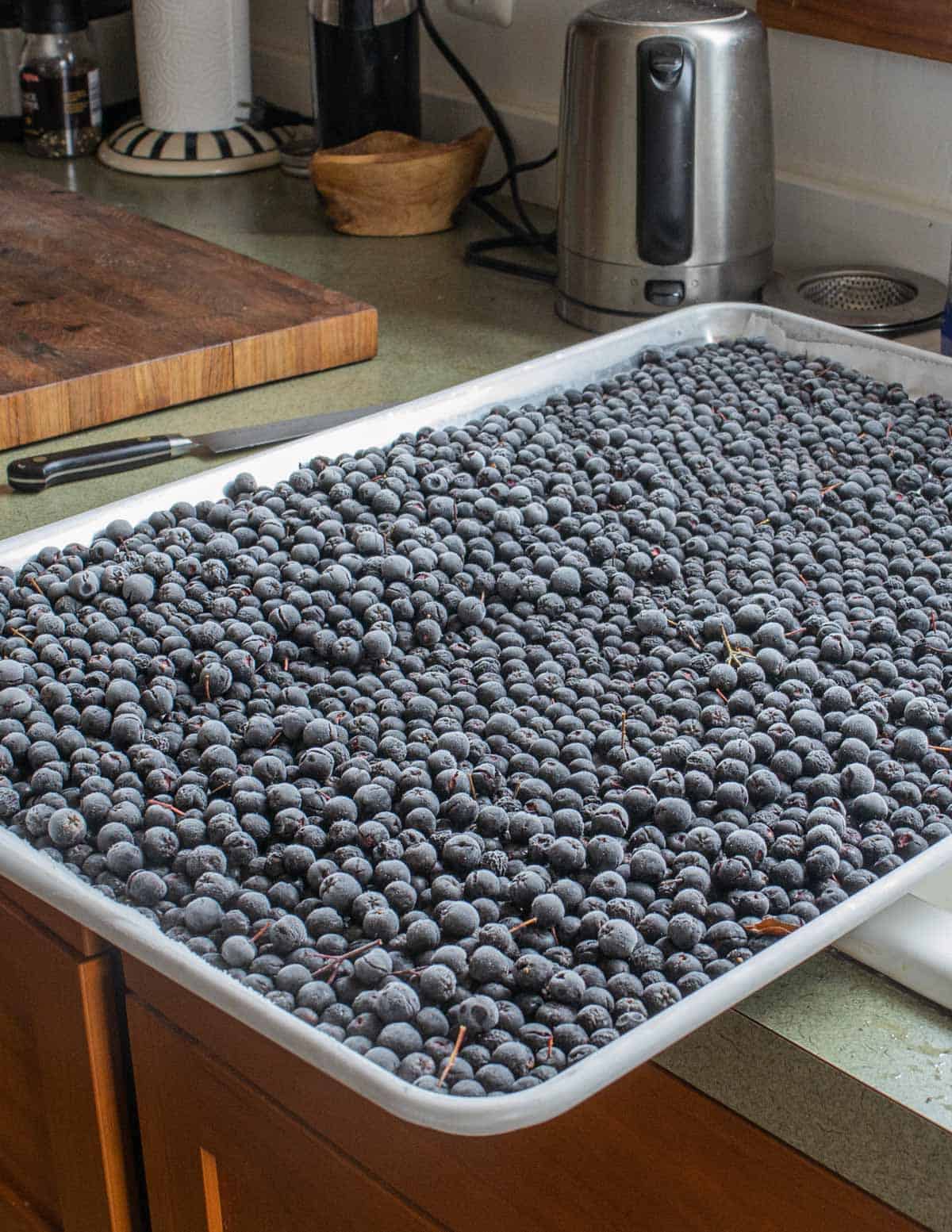
Once the berries are frozen they're transferred to zip top bags or other containers and will last for years.
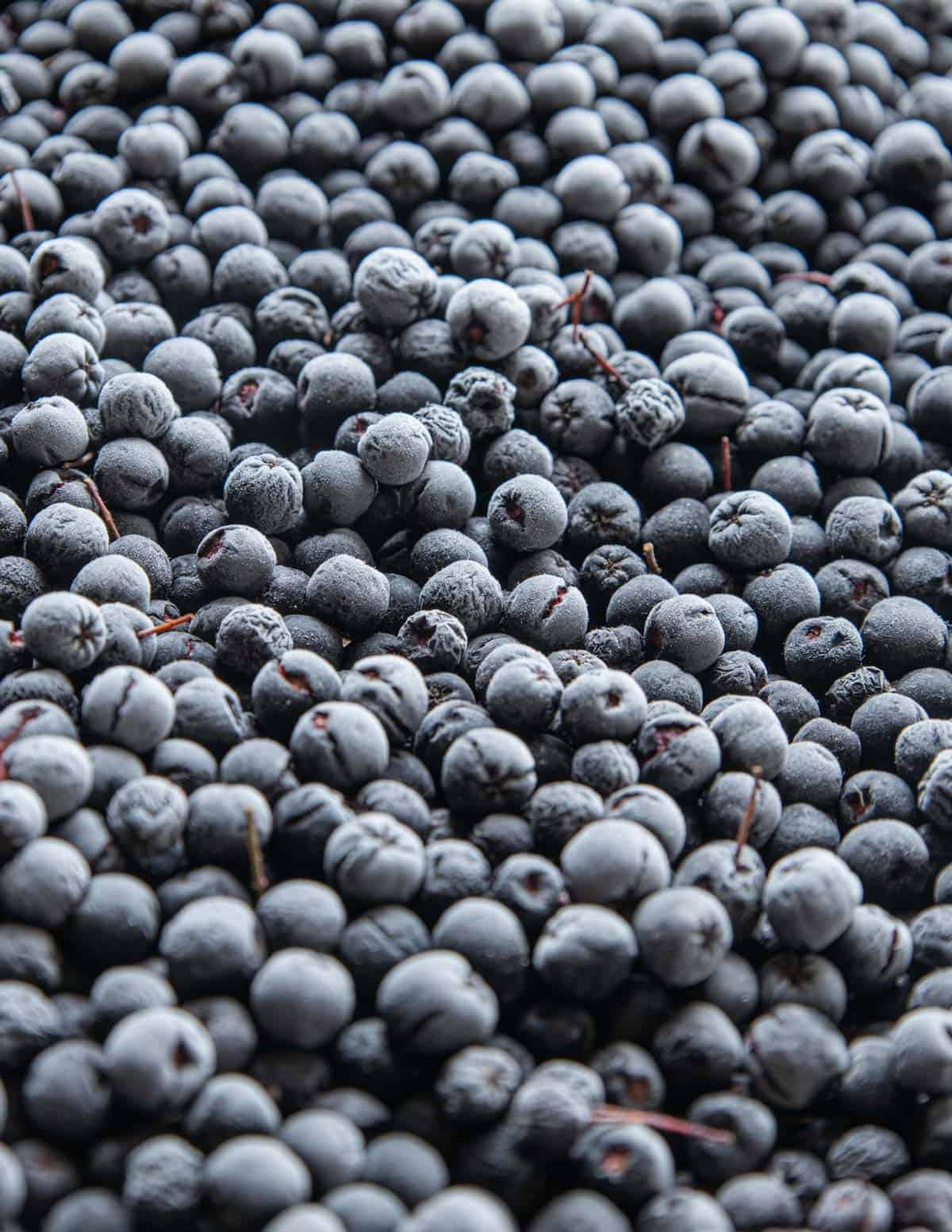
Aronia Powder
Drying or dehydrating aronia fruit is another preservation technique I use often and one more people should know about. Dehydrating the fruit curbs some of the astringency, making them much more palatable and allowing the whole fruit to be consumed.
If you're wondering how you might use fruit powder there's lots of things to do with it. Here's a few examples of things I've done over the years.
Add a tablespoon of powder to a smoothie for a beautiful purple color.
- Use the powder to coat fruit truffles.
- Add it to fruit sauces and vinaigrettes.
- Add the powder to baked goods and quickbreads like aronia muffins.
- Use it as a natural purple food coloring for pickles. Use 1 tablespoon of chokeberry powder for each pint jar.
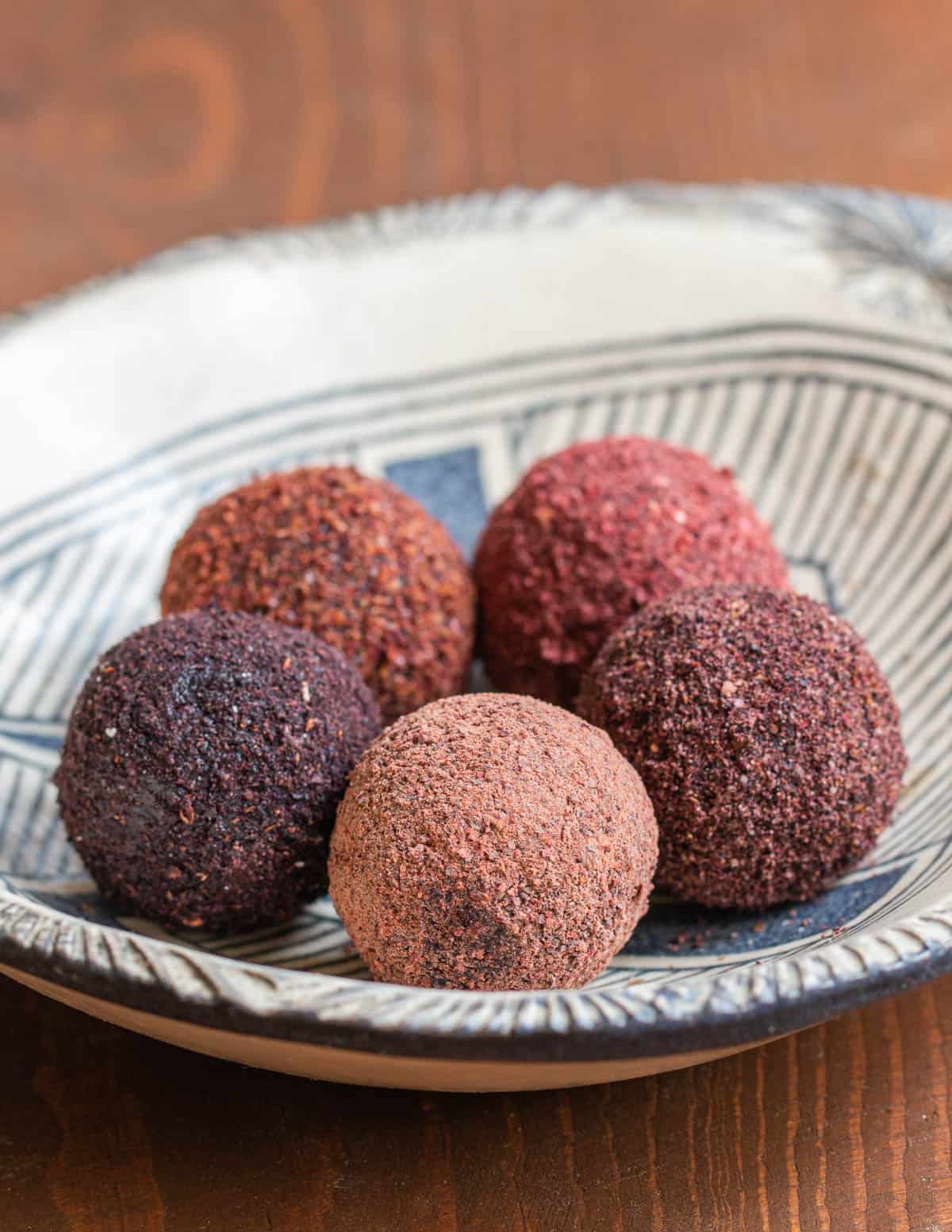
More Native Fruits
Resources and Links
- Buy Frozen Aroniaberries
- Sam Thayer's Field Guide to Wild Plants of Eastern North America
- Aronia Berry Festival

Leave a Reply